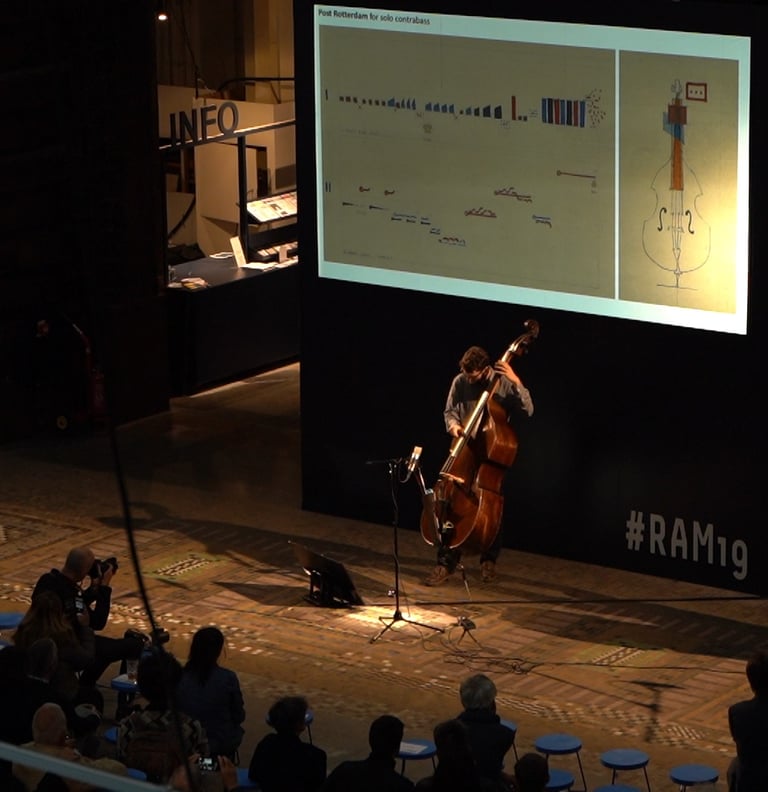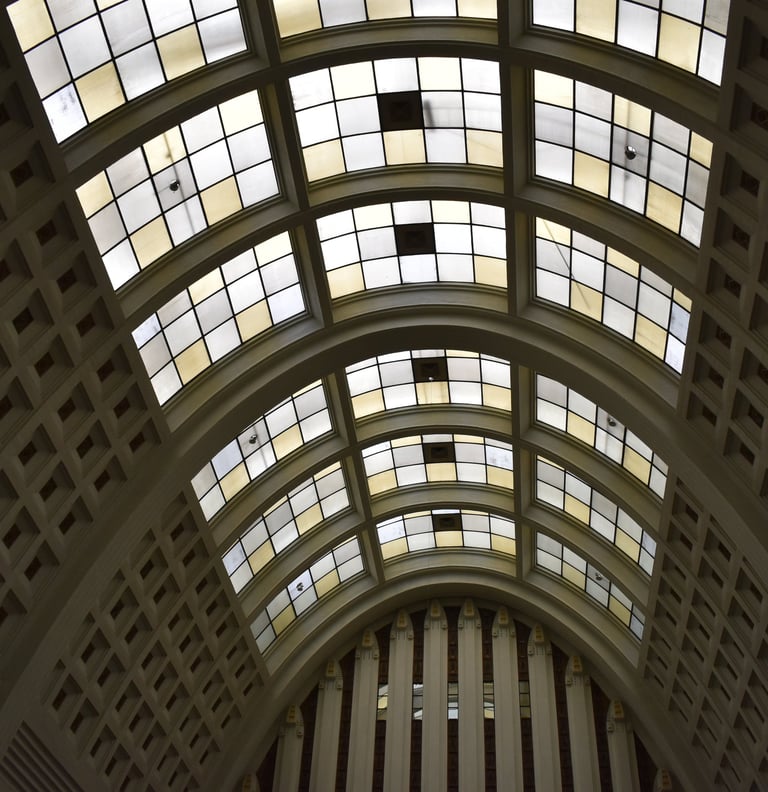Building Experiments with Johannes Fend, Post Rotterdam
This month’s experiment took place at the Old Post Office in Rotterdam, as part of Rotterdam Architecture Month #19. The building, empty for quite some time, is now awaiting transformation into a high-rise hotel. With its layered history and uncertain future, it offered a rich starting point for a new musicographic exploration.
Murat Ali Cengiz
8/31/20192 min read
This month’s experiment took place at the Old Post Office in Rotterdam, as part of Rotterdam Architecture Month #19. The building, empty for quite some time, is now awaiting transformation into a high-rise hotel. With its layered history and uncertain future, it offered a rich starting point for a new musicographic exploration.
After studying the space and the story of its origins, I decided to write a solo piece for double bass, performed by contrabassist Johannes Fend. The project was documented together with our director and photographer Adem Gümrükcüler, and we were given three days to work in the building. Two of these coincided with the ongoing construction of the festival, which can be seen in the videos below, and the final day took place just before the performance.
When we entered the main hall of the Post Office, the most striking impression was its cathedral-like reverb. This vast acoustic space was the main reason I wanted to compose for a low-register instrument such as the cello or double bass, both of which could resonate fully with the building’s natural sound. The second element that immediately caught my eye was the intricate mosaics on the floor.
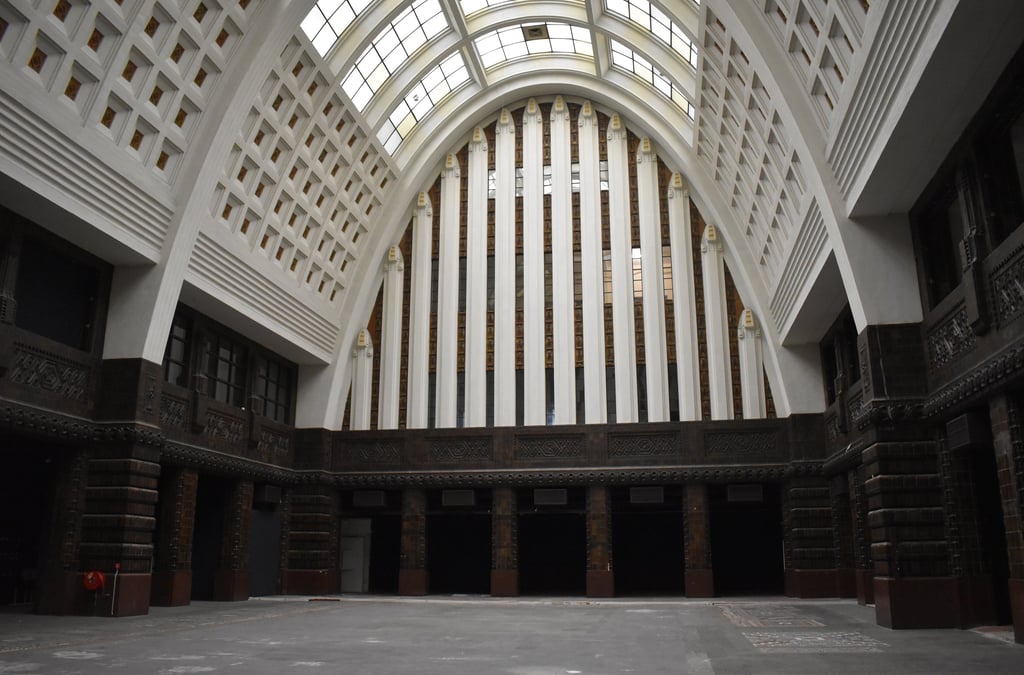

Mosaics
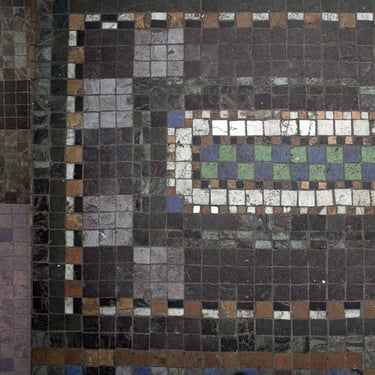
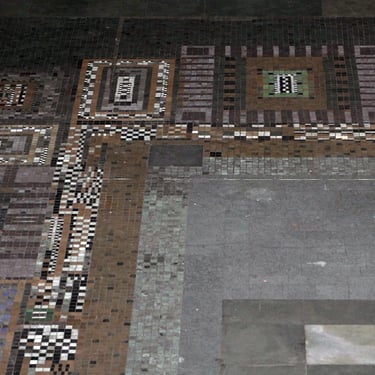
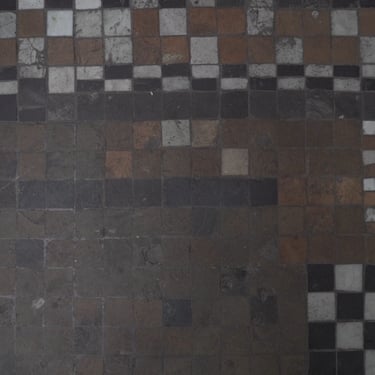
Write your text here...The mosaics turned out to be more than decoration. Built piece by piece by the mason, they reveal a striking paradox: while they appear symmetrical at first glance, closer inspection shows that every tile differs in color, size, and shape. They contain subtle irregularities, almost like fingerprints, giving them an organic quality. This discovery became the core inspiration for the musicographic of the piece. I regret not having more time to study and transcribe the mosaics in detail, as they could have served as a score on their own.
The composition I created was structured into two larger parts, using the history of the building as its narrative backbone. The music begins with the post office in its original function, represented by a telephone effect. It then moves into the war years, followed by a long period of emptiness, where silence and resonance dominate. Finally, the piece ends with the building’s future transformation into a hotel, marked symbolically by the sound of a reception bell.
Musicographic for the DOUBLE bass
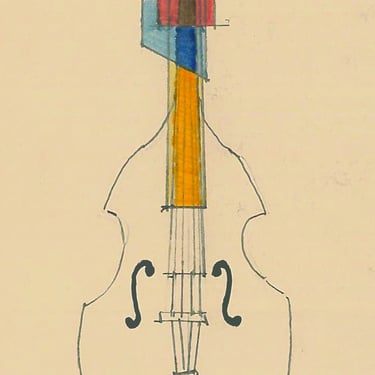
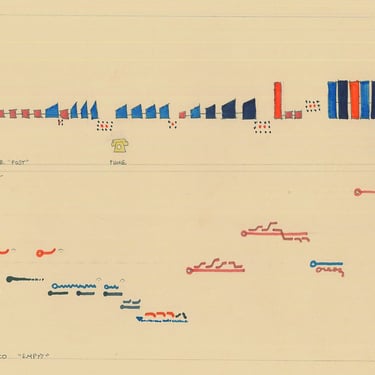
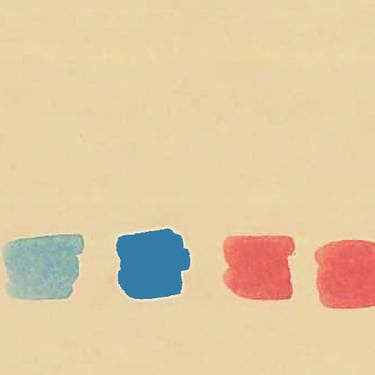
In this experiment, the mosaics stood for the building’s organic and human side, while the reverberant space embodied its monumental and architectural presence. The double bass, with its capacity for resonance, weight, and subtle nuance, became the perfect medium to connect these two qualities.
On a technical side, the piece explored extended techniques for double bass, the interaction between acoustic resonance and space, and graphic transcription of patterns. The performance became less about a fixed score and more about a dialogue between instrument, performer, and building.
The Old Post Office, in its transition between past and future, proved to be not only a site but also a collaborator. Through sound, it revealed its memory and its anticipation.
